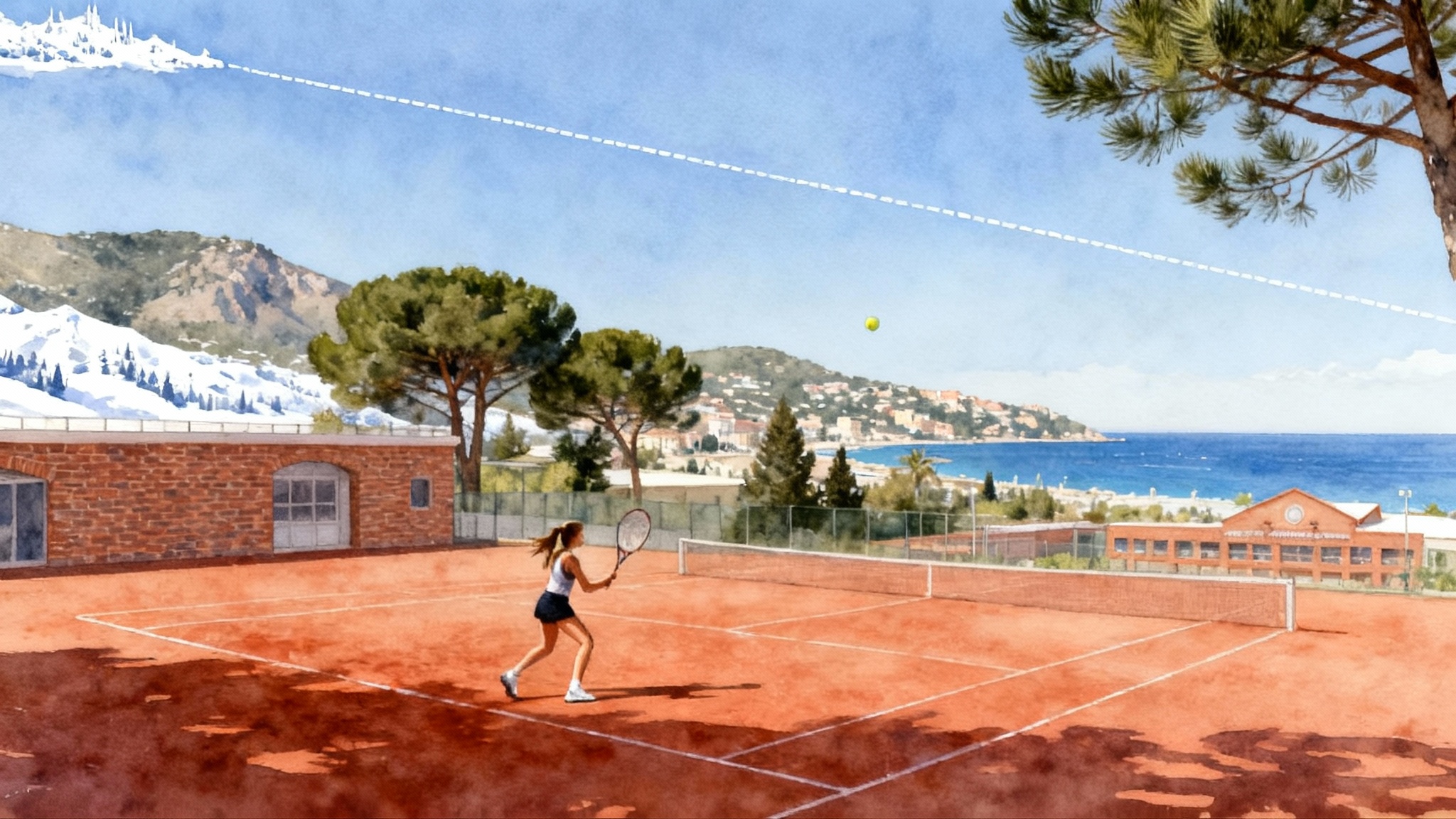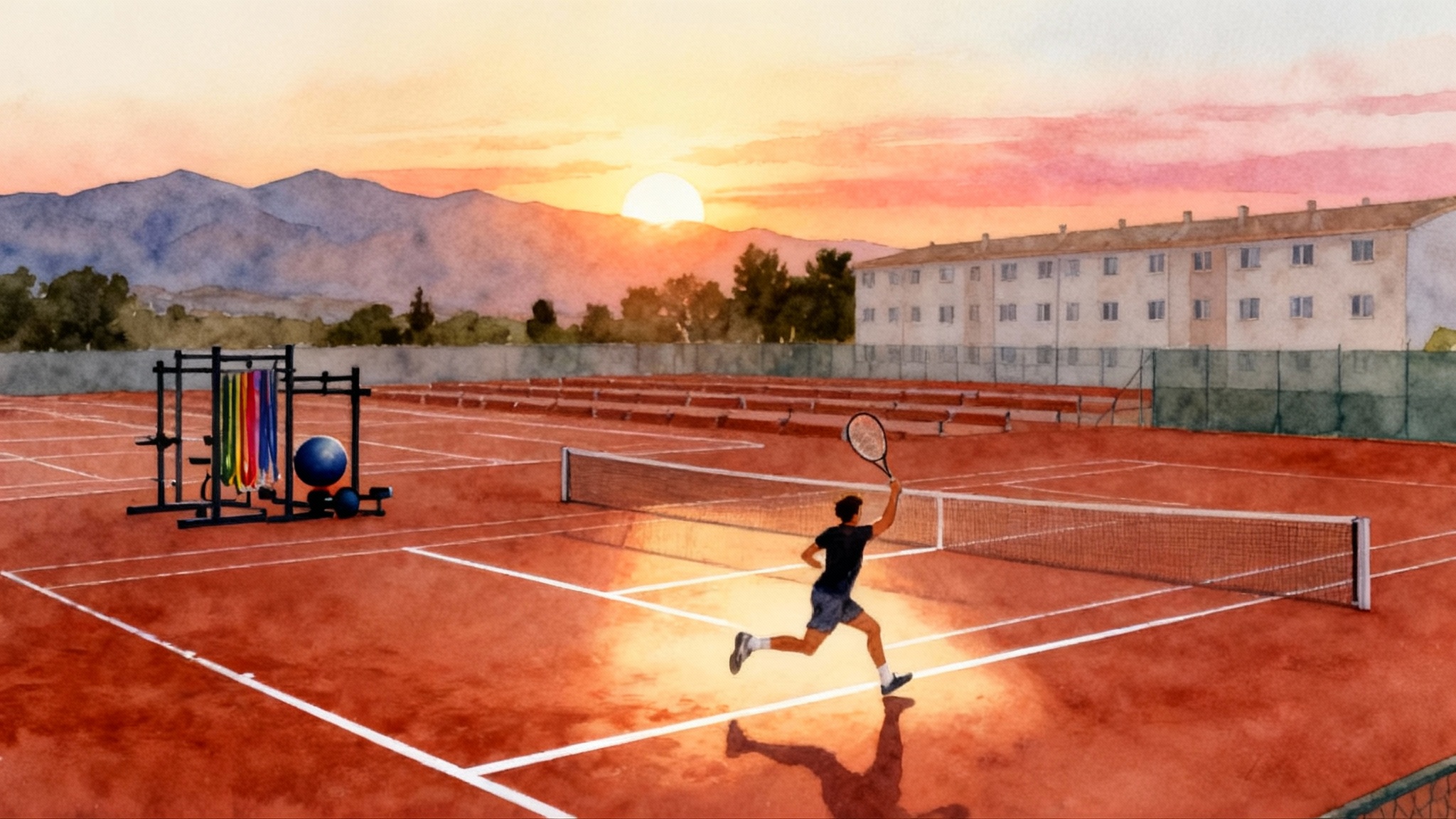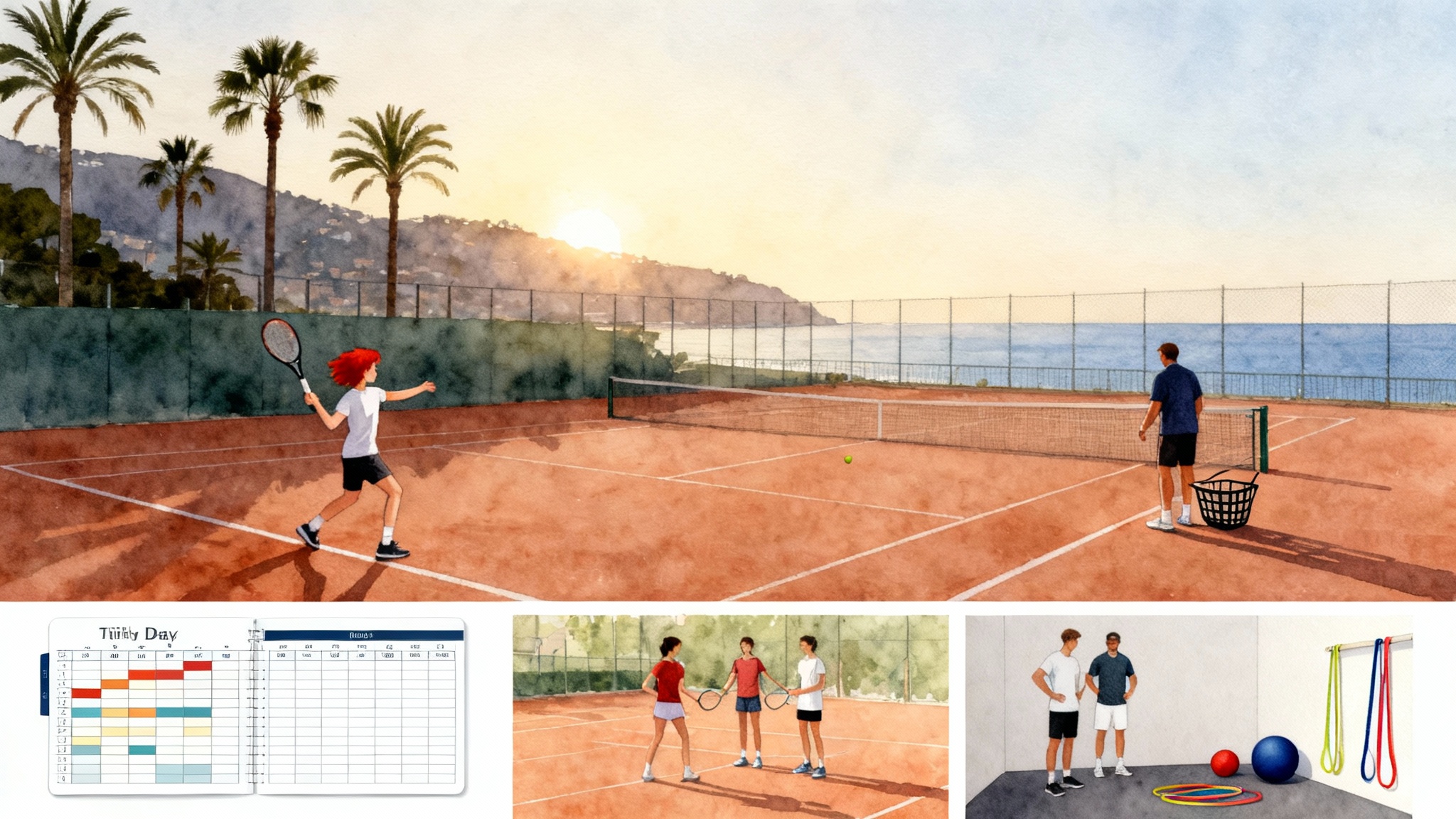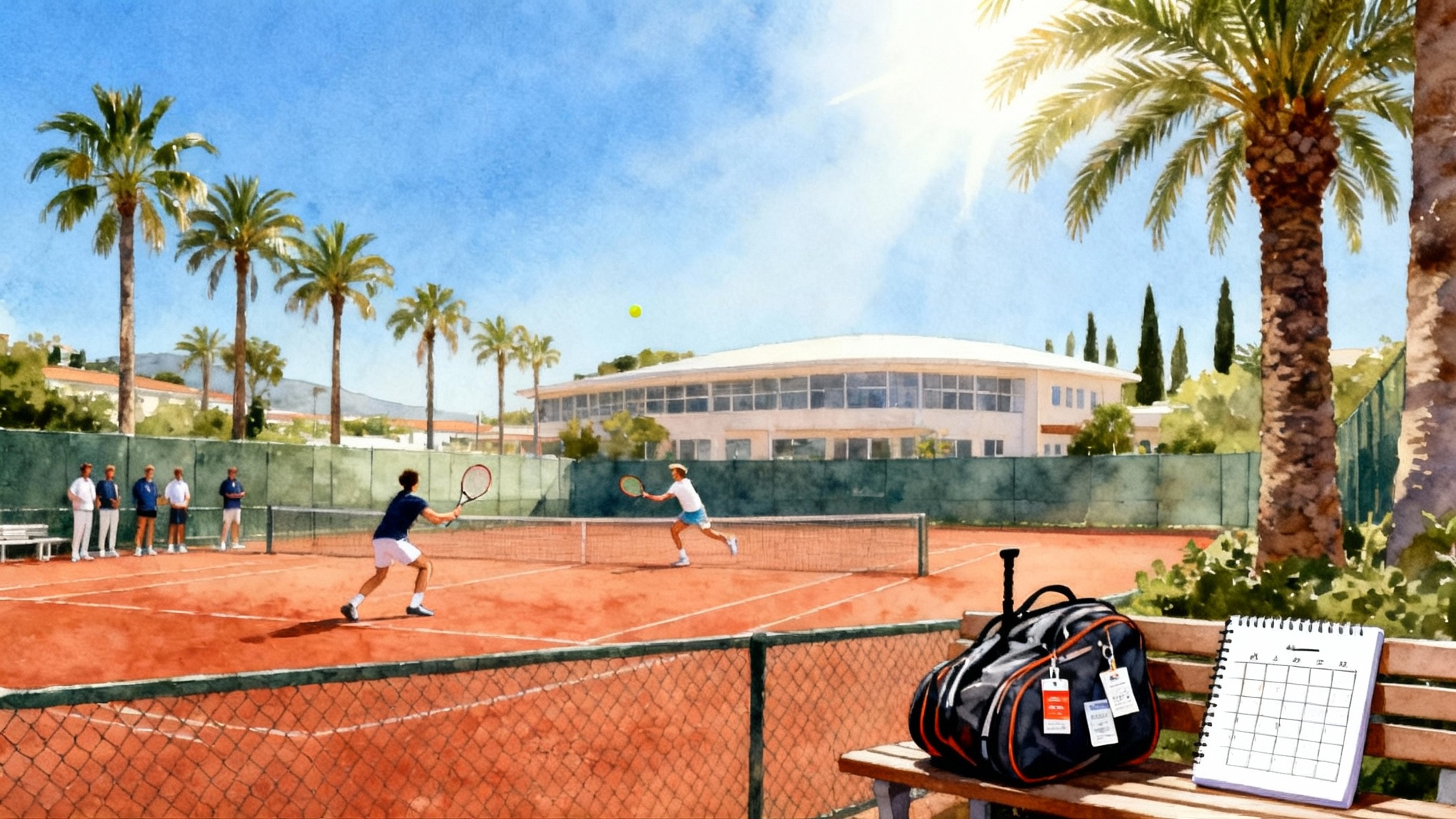From Oslo to Mallorca: How Nadal Academy Shaped Casper Ruud
Casper Ruud left Oslo’s winters for Mallorca’s red clay and a daily rhythm built around reps, routines, and sparring with Rafael Nadal. Here is how the academy’s structure and clay-first lens powered his surge to multiple major finals.
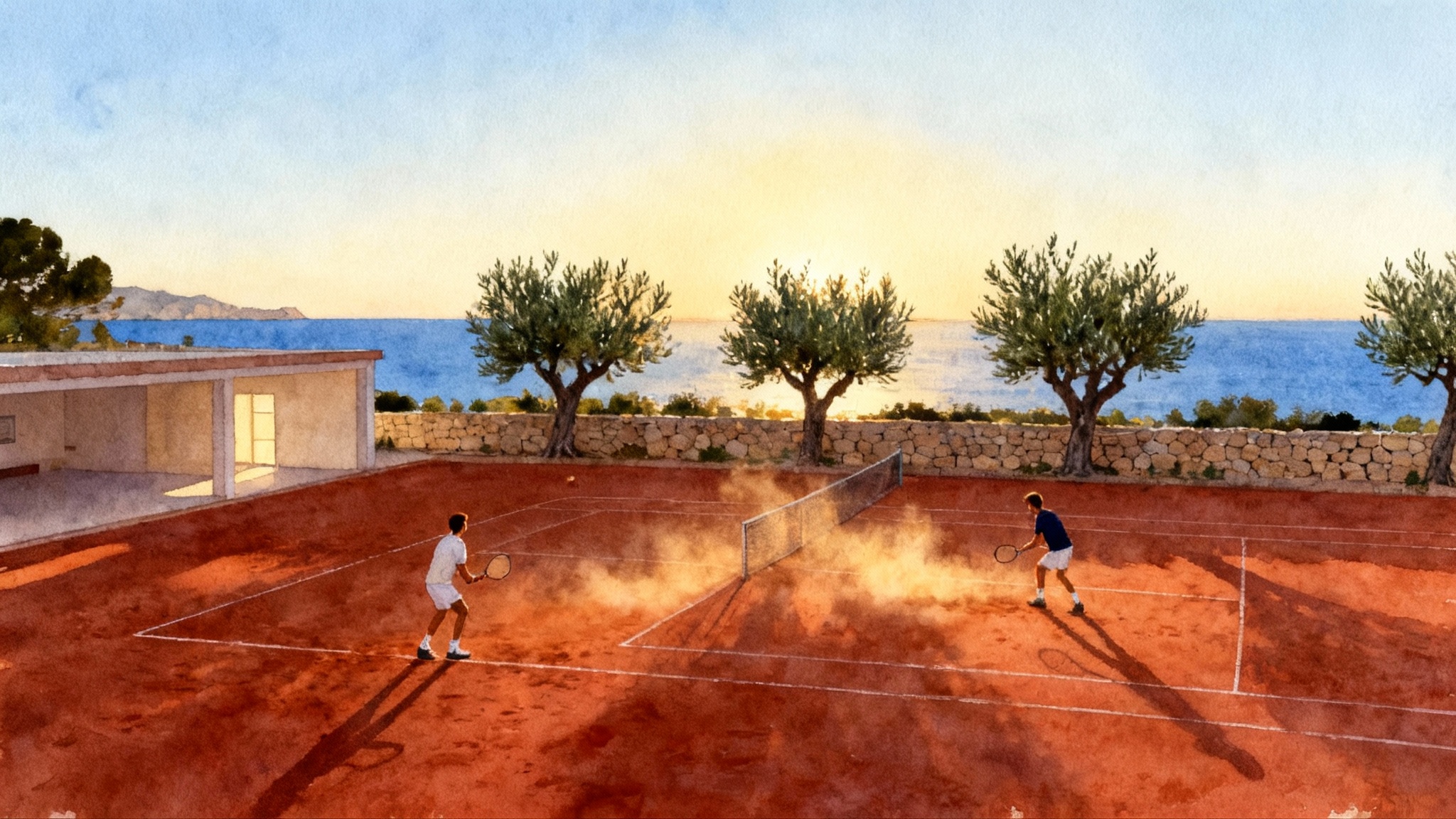
The decision to leave Oslo
Casper Ruud’s rise did not hinge on one magic stroke. It grew out of a choice. As a teenager, he left the Norwegian winter and the comfort of familiar indoor courts for an island of red clay and heat in Manacor, Spain. The Rafa Nadal Academy offered what Oslo could not deliver year round: outdoor volume, elite sparring, and a culture where intensity is not a mood but a standard. That change of address rewired his daily life, and in time, his ranking and results.
Before long, Ruud’s calendar, practice blocks, and even his tactical identity were patterned around a simple premise: become world class on clay first, then export that game to other surfaces with disciplined adjustments. The proof arrived in deep runs across seasons and surfaces, culminating in multiple major finals documented on the Casper Ruud ATP profile.
For a parallel academy-first trajectory, compare the Spanish clay schooling in Alcaraz’s JC Ferrero Academy path.
Inside a day at the Rafa Nadal Academy
Walk into the Manacor campus at dawn and the environment explains itself. The red dust, the quick pace between drills, the steady presence of coaches who speak in verbs, not adjectives. A typical academy day is not glamorous. It is a sequence.
- Morning activation: mobility, trunk stability, and short accelerations. The goal is to wire the first step and protect the lower back and hips that absorb the heavy load of clay movement.
- First on-court session: high-ball forehand patterns, crosscourt depth, and height over the net. The mantra is heavy, deep, and safe. Players hit through cones that force targets beyond the service line and above a coach’s outstretched racquet.
- Lunch and recovery: food, hydration, then a short nap or soft tissue work. Recovery is scheduled, not improvised.
- Second on-court session: serve plus one, return plus one, and situational games to 11 points. Scorekeeping tightens focus. Coaches emphasize decisions as much as technique.
- Strength and conditioning: unilateral lower body work, elastic power, and repeated changes of direction. The weight room mirrors the court with emphasis on rotation, deceleration, and balance.
- Film and notes: short, specific clips, two to four teachable moments, then a written cue or two for the next day.
The academy’s method marries high-volume repetition with very narrow cues. “Higher net clearance,” “one more step around the backhand,” or “first forehand to the outside corner” are not slogans, they are measurable behaviors. That is how a style becomes repeatable under pressure. For a deeper view of how the school sequences training, the academy outlines its Rafa Nadal Academy training philosophy.
Sparring with Rafael Nadal: the master class that never ends
Ruud did not simply hit balls beside Rafael Nadal. He watched how Nadal practices. There is a difference. Intensity in that context looks like this:
- Rallies begin with neutral balls that still carry weight. Nadal’s forehands clear the net with margin yet land near the baseline. The speed is not reckless, it is layered, heavy first, then quick.
- Movement is elastic. Nadal recovers to the middle with his chest facing the net, feet hot, racquet always in the slot. Ruud absorbed the habit of completing the recovery, not admiring the shot.
- Patterns have intention. Lefty wide serve to set up a first forehand to the ad corner. To the eye it is simple, but the repetition builds a pattern library that holds in tiebreaks.
When you hit across the net from that, you adjust or you drown. Ruud adjusted. He learned to live higher over the net without giving up depth. He took an extra step to hit forehands inside out rather than settling for neutral backhands. He accepted that point construction on clay is a marathon of short sprints, not a sprint that hopes to end early.
The clay-first blueprint
A player cannot master every surface at once. The academy encouraged Ruud to dominate one foundation first. Clay rewards shape, patience, and footwork that transfers beautifully to hard courts. On clay, Ruud learned to:
- Create shape with a higher forehand contact and a brushing finish that still drives through the court.
- Use his kick serve to stretch right-handers in the ad court, earning a first forehand with room to accelerate.
- Slide into contact with balance, then push out to recover faster than the opponent finishes admiring a shot.
This clay identity delivered confidence and points. It also clarified his schedule. Early season, he leaned into South American clay events to bank matches and ranking movement. European spring then stacked even more clay volume. The goal was not romance with red dirt. It was predictable improvement in the skills that carry across surfaces: depth control, defensive neutralization, and forehand dominance.
Scheduling as a weapon
The right calendar speeds development. The wrong calendar flatters the ego but stalls the game. Ruud’s team used a simple algorithm:
- Start where your identity wins matches. Early wins create real feedback, not just optimism.
- Add stretch tournaments where the surface asks new questions, but only after a block of success on the home surface.
- Use the practice weeks between events to sharpen one or two transportable weapons, not everything at once.
For Ruud, that meant periods of clay consolidation followed by strategic forays to hard courts. Miami and the North American swing became laboratories to test an earlier contact point and a more assertive backhand down the line, without abandoning the forehand-led patterns that made him dangerous.
For another case study in smart scheduling and academy culture, see Djokovic’s Niki Pilic Academy years.
Exporting the game model to hard courts
The hardest turn for a clay-first player is not physical, it is mental. You must keep your high margin without becoming passive. Ruud’s export plan looked like this:
- Serve patterns: keep the ad-court kick serve, but mix in more body serves to rush returners. On faster courts, pace plus surprise beats shape alone.
- Backhand intent: hold the crosscourt exchange longer to open the line, then take the line early to surprise. That one change shortens points on hard courts.
- Court position: start deeper in rallies to buy time, then step in behind shorter balls to take time away. The first step is conservative, the second step is assertive.
- First volley finishes: on hard courts, the first low volley is often enough. Practice volleys that land three feet inside the baseline, not perfect drop shots.
The result was a player who kept clay habits that create safety while adding a few speed triggers that create quick points.
Breakthroughs that validated the method
Results do not lie, and they do not happen by accident. After building his base in Mallorca and living through many seasons of clay work, Ruud stacked the kinds of weeks that change a career. He collected titles in European clay events, broke into the very top of the rankings, and reached major finals at Roland Garros and the United States Open. He returned to the Roland Garros final the following year. Those runs were not detours from his identity. They were confirmation that the identity transfers when you plan the travel.
What parents and juniors can copy right now
You do not need to move to Mallorca to learn from Mallorca. Here is a concrete playbook.
- Decide when to relocate
- Use a skills threshold, not an age, to trigger relocation. If a player is dominating local competition without being stretched physically or tactically, the player is ready for a higher daily standard.
- Climate matters. If your home base forces months indoors, consider seasonal relocation blocks to an outdoor academy to build footwork and endurance. A resort-integrated option that follows Nadal’s methodology is the Rafa Nadal Tennis Center Costa Mujeres.
- Education and support must be solved up front. Combine online schooling with tutor hours and set a weekly plan. A messy school plan is the fastest way to sabotage progress.
- Leverage the academy ecosystem
- Sparring hierarchy: schedule two weekly hits with a player who is a little better, one hit with a similar level, and one with a contrasting style. The contrast forces adaptation.
- Integrated support: seek a program where coaching, fitness, physio, and mental skills talk to each other. Ask how injuries are triaged, how tests are shared, and how training is adjusted.
- Measured goals: choose two statistics that the academy can measure on court, such as average forehand net clearance and percentage of first forehands that land past the service line. Re-measure every three weeks.
- Build a clay-first base, even if you live on hard courts
- Install one clay habit at a time: for example, add a rule that every neutral forehand must clear the net by the height of the tape plus the width of two tennis balls.
- Practice sliding mechanics on safe surfaces with cones and short approaches, then graduate to full slides on clay. Sliding is a technique, not a risk.
- Keep a forehand-first bias in pattern games. If your backhand begins a point, design the next ball to shift to an inside-out forehand.
- Export the base to other surfaces
- Add a hard-court block where the player must take at least three balls per game on the rise inside the baseline. Track how that changes rally length.
- Layer in first volley finishes after heavy forehand approaches. Keep the target deep and through the middle to reduce angles for the pass.
- Make scheduling earn the progress
- Choose early-season events on your best surface, then add a stretch event on the opposite surface. Use the data from those events to select the next block of training drills.
- Avoid chasing points at the wrong level. If you are not earning three to four quality matches per event, step down a level, rebuild confidence and patterns, then step up again.
A brief comparison: Rafa Nadal Academy vs Mouratoglou Academy
Both environments can develop a top player. Their edges differ, and that should guide your choice.
-
Training rhythm
- Rafa Nadal Academy: repetition, height and depth control, and pattern discipline. The daily cadence is built around long, purposeful rallies and physical endurance.
- Mouratoglou Academy: strong use of video and tactical problem solving in shorter game formats. Sessions often emphasize set plays and decision making under scoreboard pressure.
-
Surfaces and climate
- Rafa Nadal Academy in Mallorca: abundant clay with Mediterranean heat that rewards stamina and outdoor volume.
- Mouratoglou Academy on the French Riviera: a mix of hard and clay, with mild weather and more frequent access to faster courts.
-
Player exposure
- Rafa Nadal Academy: the chance to watch a champion practice up close can reset a junior’s idea of effort and focus.
- Mouratoglou Academy: frequent match-play blocks and events bring variety of styles in a single week, which accelerates tactical learning.
Actionable takeaway: pick the academy whose natural surface and daily cadence match the player’s developmental priority for the next 12 months. If your goal is to harden movement, stamina, and forehand patterns, Mallorca fits. If your goal is to sharpen decision speed and set plays on faster courts, the Riviera may be better.
A sample week inspired by Ruud’s routine
Use this as a template, then adapt to age and volume tolerance.
-
Monday
- Morning: mobility and footwork ladders, then 90 minutes of heavy crosscourt forehands with high net clearance.
- Afternoon: serve plus one patterns on deuce and ad, finish with seven-point tiebreakers that begin with a second serve.
-
Tuesday
- Morning: return plus one, emphasis on deep middle neutral balls to start rallies.
- Afternoon: strength session with unilateral lower body work, then 45 minutes of short-court on the rise to train earlier contact.
-
Wednesday
- Morning: sparring with a slightly higher level player, two sets with coaching on changeovers.
- Afternoon: film review, two clips per set, write two cues for Thursday.
-
Thursday
- Morning: backhand crosscourt holds and surprise lines, pattern into first volley finishes.
- Afternoon: recovery ride or pool session, soft tissue, and flexibility.
-
Friday
- Morning: live sets starting at 30-30 to elevate pressure on serve and return.
- Afternoon: serve targets, 40 balls to each corner with consequence for misses.
-
Saturday
- Morning: competition day or a heavy fitness session if there is no event.
- Afternoon: short hit, then off.
-
Sunday
- Off, family time, plan the upcoming week.
Common obstacles and how to handle them
- Over-scheduling: more tournaments do not equal more progress. If quality practice drops, cut a tournament and add a focused training block with measurable goals.
- Technique drift: clay volume can tempt players into looping too much. Keep a weekly hard-court on-the-rise drill to preserve early contact skills.
- School and fatigue: set non-negotiable sleep windows and schedule schoolwork in two fixed blocks daily. Predictability reduces mental fatigue.
What this story means for you
Ruud’s ascent is not a fairy tale about finding a magic academy. It is a case study in choosing an environment that matches a game model, then living a routine until it compounds. The Rafa Nadal Academy provided consistency, sparring, and a clay-first lens. Ruud and his team provided patience and intelligent scheduling. The combination turned potential into finals and finals into a durable identity.
You do not need the same passport stamps to follow the same map. Pick one surface to master. Organize a day that repeats what matters. Seek sparring that exposes gaps rather than flatters strengths. Use your calendar like a tool, not a trophy case. And when the game travels to new courts, add only the adjustments that create speed without losing your foundation.
